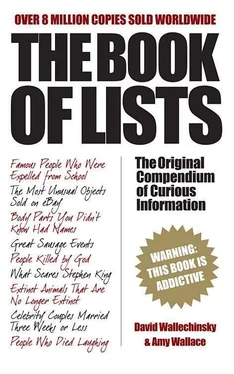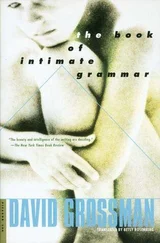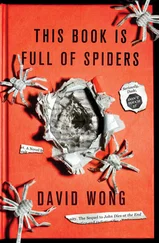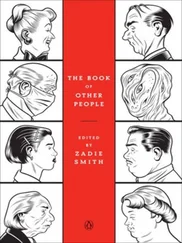8. THE PENCIL
This is one of those things you don’t think of as a tool. But whenever you make something out of wood you’re going to need a pencil at some point, whether to mark a line for cutting or to jot down calculations for the measurements or to sketch a complicated joint and fix the shape in your mind. I have never found those wide so-called carpenter’s pencils with a flat lead any better than an ordinary HB. A few strokes on a piece of fine sandpaper will restore the sharpest of points.
9. THE BELT SANDER
I had to think hard about which power tool to include. Each one I have is utterly necessary, and so is the next one I’m going to buy, as soon as I decide which it is. How can you cut complex shapes without a bandsaw? How did we manage to do anything at all before they invented the router? But if you’re making a large piece of furniture, the only way to achieve a perfectly smooth surface without loathsome and back-breaking toil is to use a belt sander. It removes all the bumps and hollows and rough patches, and with progressively finer belts you can get a result that would have taken our ancestors hours, if not days. They might have turned their noses up at the biscuit jointer or the radial-arm saw, but they would have used one of these like a shot.
10. THE JIG
A hammer always looks like a hammer, a screwdriver always looks like a screwdriver. But a jig can look like anything. It’s a frame or a holding device that’s often made specifically for one job and then put away in the corner of the workshop and never used again. But you don’t throw it away, just in case. It’s used to hold a workpiece in exactly the right place relative to the cutting edge or the drill bit or whatever it might be, to ensure that you cut a perfect semicircle on the bandsaw, or drill thirty holes at exactly the right angle, or cut several mortises to exactly the right depth, or… I love jigs.
?? THE ENIGMA
This is a beautiful and slender piece of bronze about a foot long. For half its length, it’s been beaten out into a flat blade about as wide as a finger, with an edge that’s too blunt to cut anything but paper: it’s a perfect letter-opener. The other end has been formed into a similar but shorter blade at right angles to the first; and the shorter blade has been bent half way along its length into a flat foot, at right angles to the main shaft, about as long as the middle joint of my thumb. It’s been made by hand, and it’s worn smooth with use. I guess it was made to tamp down the sand in a mould, but I really have no idea. I use it for scratching my back.
27 THINGS THAT ARE NOT WHAT THEY SEEM
• A firefly is not a fly — it’s a beetle.
• A prairie dog is not a dog — it’s a rodent.
• India ink is not from India — it’s from China and Egypt.
• A horned toad is not a toad — it’s a lizard.
• A lead pencil contains no lead — it contains graphite.
• A Douglas fir tree is not a fir — it’s a pine.
• A silkworm is not a worm — it’s a caterpillar.
• A peanut is not a nut — it’s a legume.
• A panda bear is not a bear — it’s a raccoon relative.
• A cor anglais , or English horn, is not English and not a horn — it’s an alto oboe from France.
• A guinea pig is not from Guinea and is not a pig — it’s from South America and it’s a rodent.
• Shortbread is not a bread — it’s a thick biscuit.
• Dresden china is not made in Dresden — it’s made in Meissen.
• A shooting star is not a star — it’s a meteor.
• A funny bone is not a bone — it’s the spot where the ulnar nerve touches the humerus.
• Chop suey is not a native Chinese dish — it was invented by Chinese immigrants in California.
• A bald eagle is not bald — it’s got flat white feathers on its head and neck when mature, dark feathers when young.
• A banana tree is not a tree — it’s a herb.
• A cucumber is not a vegetable — it’s a fruit.
• A jackrabbit is not a rabbit — it’s a hare.
• A piece of catgut is not from a cat — it’s usually made from sheep intestines.
• A Mexican jumping bean is not a bean — it’s a seed with a larva inside.
• A Turkish bath is not Turkish — it’s Roman.
• A koala bear is not a bear — it’s a marsupial.
• A sweetbread is not bread — it’s from a calf’s or lamb’s pancreas or thymus.
• Bombay duck is not a duck — it’s a dried fish.
• A prairie oyster is not an oyster — it’s a calf’s testicle.
– I.W. & W.D.
1. THE SUBMARINE
‘I must confess that my imagination, in spite even of spurring, refuses to see any sort of submarine doing anything but suffocating its crew and floundering at sea.’
H.G. Wells, British novelist, in
Anticipations , 1901
The development of the submarine proceeded rapidly in the early twentieth century, and by World War I submarines were a major factor in naval warfare. They played an even more important role in World War II. By the 1960s and 1970s submarines were considered among the most important of all strategic weapons.
2. AIRCRAFT
‘We hope that Professor [Samuel] Langley will not put his substantial greatness as a scientist in further peril by continuing to waste his time, and the money involved, in further airship experiments. Life is short, and he is capable of services to humanity incomparably greater than can be expected to result from trying to fly… For students and investigators of the Langley type there are more useful employments.’
The New York Times , December 10, 1903
Exactly one week later, the Wright brothers made the first successful flight at Kitty Hawk, North Carolina.
‘I confess that in 1901, I said to my brother Orville that man would not fly for fifty years… Ever since, I have distrusted myself and avoided all predictions.’
Wilbur Wright, US aviation pioneer, 1908
‘The popular mind often pictures gigantic flying machines speeding across the Atlantic and carrying innumerable passengers in a way analogous to our modern steamship… It seems safe to say that such ideas must be wholly visionary, and even if a machine could get across with one or two passengers the expense would be prohibitive to any but the capitalist who could own his own yacht.
Another popular fallacy is to expect enormous speed to be obtained. It must be remembered that the resistance of the air increases as the square of the speed and the work as the cube… If with 30 horse-power we can now attain a speed of 40 miles per hour, then in order to reach a speed of 100 miles per hour we must use a motor capable of 470 horse-power… It is clear that with our present devices there is no hope of competing for racing speed with either our locomotives or our automobiles.’
William H. Pickering, US astronomer, circa 1910, after the invention of the aeroplane
The first transatlantic commercial scheduled passenger air service was June 17 to 19, 1939, New York to England. The fare one way was $375, round trip $675 — no more than a first-class fare on an ocean liner at the time. On October 14, 1922, at Mount Clemens, Michigan, a plane was flown at 216.1 mph.
3. HIGHWAYS
‘The actual building of roads devoted to motor cars is not for the near future, in spite of many rumors to that effect.’
Harper’s Weekly , August 2, 1902
Conceived in 1906, the Bronx River Parkway, New York, when completed in 1925, was the first auto express highway system in the United States.
4. RADIO
‘[Lee] De Forest has said in many newspapers and over his signature that it would be possible to transmit the human voice across the Atlantic before many years. Based on these absurd and deliberately misleading statements, the misguided public… has been persuaded to purchase stock in his company.’
Читать дальше












